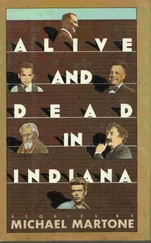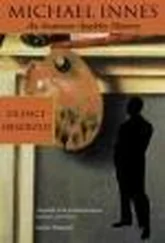SPRINGFIELD, MASSACHUSETTS
It was true. He made nothing much from his invention — the famous gas-operated, semiautomatic rifle that he developed as a government employee at the Springfield Army Arsenal. The rifle, everyone agrees, was an essential part of the American success on the battlefields of the Second World War. John Garand surrendered any right to compensation, signing over his patents, the licenses to manufacture, to the government, his employer. He never drew more than his civil service grade. His name, the name that named the rifle, was a kind of compensation. At his funeral, the honor detail of three — a sailor, a marine, and a soldier — snapped off seven volleys, live rounds, saluting the creator of the weapon they were using to salute. The.30-caliber slugs, twenty-one of them, now following their own logic, arched over Springfield, Massachusetts, propelled by the expanding gas of the ignited powder, that expansion of gas the phenomenon that Garand insightfully captured and returned to the gun's receiver to eject the spent shell and automatically chamber the next round in his rifle, which was then ready to be fired by the next twitch of the trigger. The ceremony left one bullet each in the magazines of the three rifles. The M1 clip holds eight bullets. The spent magazine was the one design flaw. The automatic ejection of the clip made a distinctive clicking sound and often warned an attentive enemy of the rifleman's momentary vulnerability as he reloaded. And this was exactly what the soldier, a private first class from Lima, of the Ohio National Guard deployed on the campus of Kent State University, was thinking as his exhausted clip ejected after he finished firing a salvo into the mob of students in front of him. The metal clip made a flat, pinging counter-punctuation to the sharp crack of the eight previous quarter notes — the bullets' staccato ignitions. The distinctive report of the Garand M1 rifle. As he rammed home the fresh clip, squeezing it into the guts of the Garand with his thumb leveraged against the polished wood and steel, he was reminded of the anecdote, probably apocryphal, of the standard ration of ammunition issued to firing squads, how one weapon is secretly loaded with blanks, which allows all the members of the squad to cede responsibility, to believe that someone's actions might have no consequence, or, more exactly, one's action might not contain the lethal ingredient, so rendering that action a reenactment only, a kind of theater, a play, a ritual that is both real and not real, where something happens and where something only appears to happen. The blank is a placebo, more potent in the mind than the body. Later he will see his picture in Life magazine, captured as he reloads the magazine of his Garand M1 semiautomatic rifle, just before he shoulders the weapon and fires again into the smear of the crowd of out-of-focus students off in the distance now on his left flank, a bank of fog in that depleted background.
The Four Sides of a Triangle: Proof
A TO B
Yesterday
I took your picture once while you were in the bathtub having tea. You held the cup to your lips, the saucer beneath the cup to catch any drips. Your hair was wet, combed back on your head. Your breasts floated on the surface of the water. I had a slide made, and, yesterday, with you gone and me alone in this rented apartment, I taped it up in the middle of a big picture window above my desk, a chip of stained glass. I look out that window, out through you looking up at me in the steam taking your picture. Each night, with the lights out in my apartment, I watched through her window, a woman in the building across the street step from her shower and reach first for a towel to wrap around her wet hair.
B TO A
Not That Long Before
You took my picture as the baby crowned, his hair matted and matte black, a shade darker than my own. His head pulsed out when I pushed, slid back in after. It was months later you developed that unfinished roll and I found those pictures with the other pictures. There was the picture of me, of the dark dome of my baby's head in the oval frame of my stretched labia. It had been the next-to-last one that came back in a pack which contained the series of silhouettes of me a few nights before the night my water broke. I wanted some evidence of how I looked, how dark my nipples had become, how rich and thick my hair. With a wet finger I made myself hard. I teased out a strand of my hair. I pointed to that dark line which had developed, dissecting my belly, running from between my breasts around and down, dark against my skin as if someone had drawn it with a crayon or lipstick and that disappeared almost immediately, along with everything else, after.
A TO C
About the Same Time
I take your picture as you make yourself come, the blank print snapping from the camera. You take it from me as you roll over. As I slide into you, you hold still, meeting me with a little grunt I force out of you. All the time you are watching the print develop. It begins with the small black speck of your hair, your hand growing from it, your arm spreading up your body between your breasts and leading to your taut neck and sharp chin, the wet sheen of your parted lips, your open and unfocused eyes.
A TO B
Years Before
We all had our picture taken that weekend, the four of us, using a one-hundred-year-old camera. We dressed up in antique clothes — hats with feathers, high collars with floppy bow ties, lots of buttons. The single lens on the camera had been replaced by one with four apertures, and, afterward, we watched as the plate of tin was snipped into four smaller squares. The etched image on each was the same, the four of us in disguise, posed and stiff, holding our breaths, trying not to blink, not moving for a minute, but each was also minutely different because of the slight distance between each lens that focused this one long exposure. Later, in our room, we listened to them in theirs make love, the thin motel walls separating the headboard of our bed from the headboard of theirs. I had brought magazines with pictures because I thought it would help, but hearing them that way had the opposite effect of what I had hoped. You got dressed, embarrassed, covering your flushed skin. You disappeared into the bathroom to pull your hair back into place. I looked at our two metal squares. I looked at her, and I looked at her. Back and forth, back and forth, trying to catch the slight shift in the angle of sight, the four lines of vision looking back at the camera then and, now, at me seeing this seeing.
FLIGHT LEADER
So, yesterday I am on the phone with a group of students from Mary Washington College who are asking me questions about writing, an interview for a new magazine they are starting called Pendulum , and there is trouble with the connection they are trying to use — they are trying to use Skype for the first time — and each time they connect they sound like the sound of ripping cloth or more exactly muffled ripping cloth, and then a recorded voice with a British accent comes on and says this phone call is being recorded and then the call is cut off, and then they call me back several times until they connect, and then they ask me the first question which is a question I get often when I do interviews which is how do you find the time to write? — or maybe something like, do you need time to write? — and I am getting ready to answer my frequently answered answer when this ripping sound comes tearing into the house as if the ripping sound in the phone has leaked out and been amplified on steroids, and I look up and see the silhouette of a jet aircraft cut through the quadrant of mullions of the window I am sitting across from, streaking through the graphed paper of the tree branches, overwhelming the static of the phone connection, and I ask them, did you hear that? and they all — it is a conference call, and I think there are four of them, but I can't be sure — answer, yes, and I tell them the Blue Angels are in town, and that was a Blue Angel practicing for the air show that will take place tomorrow over at the airfield right across the river from my house.
Читать дальше












